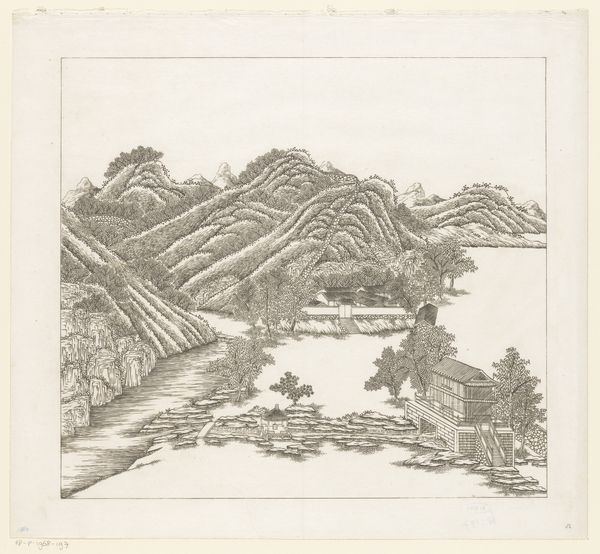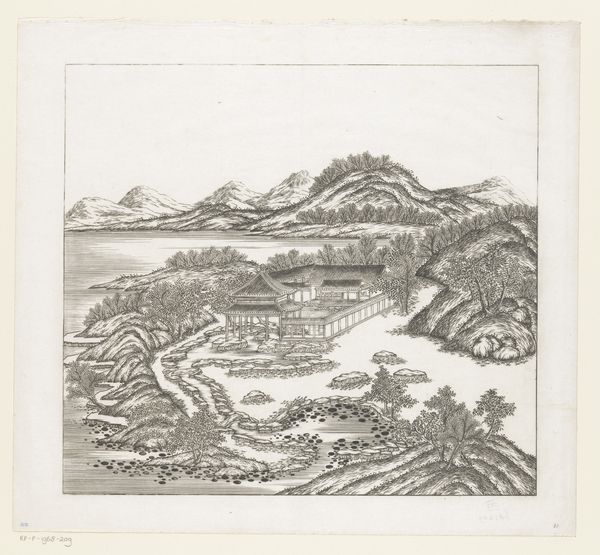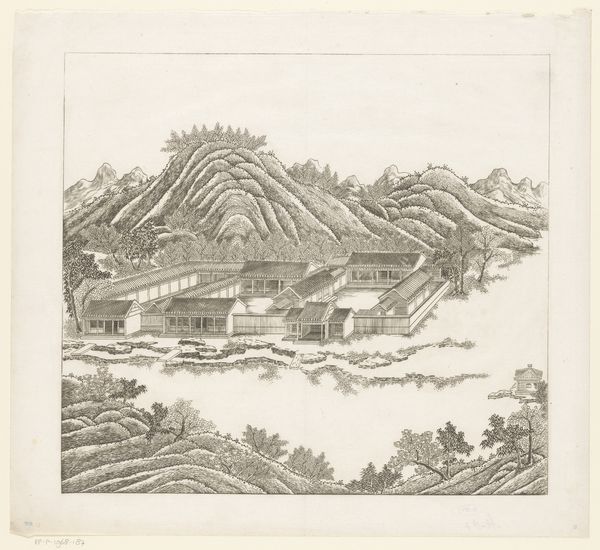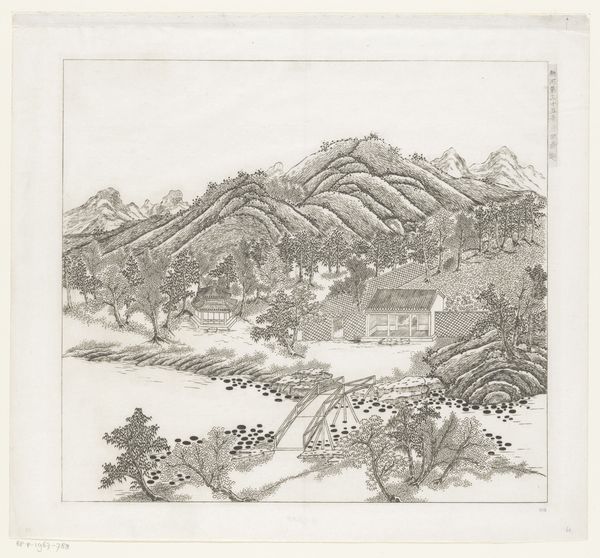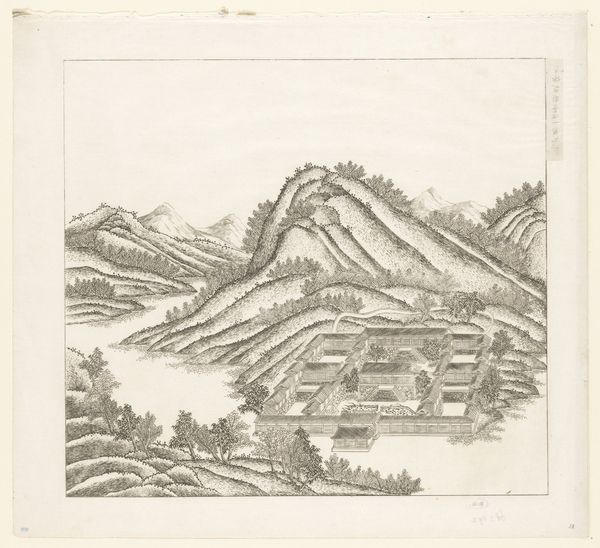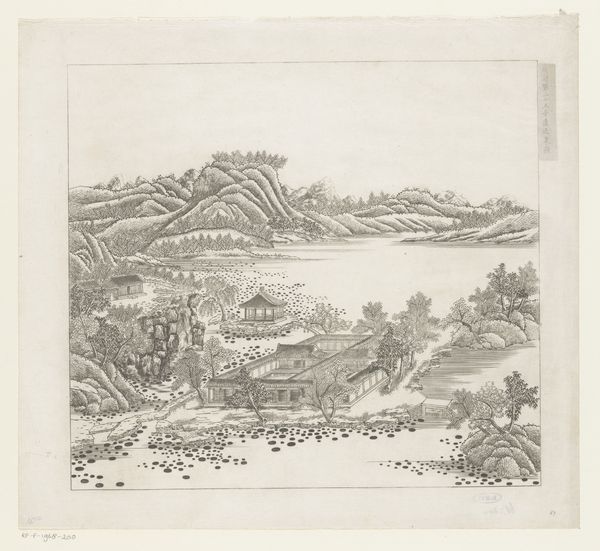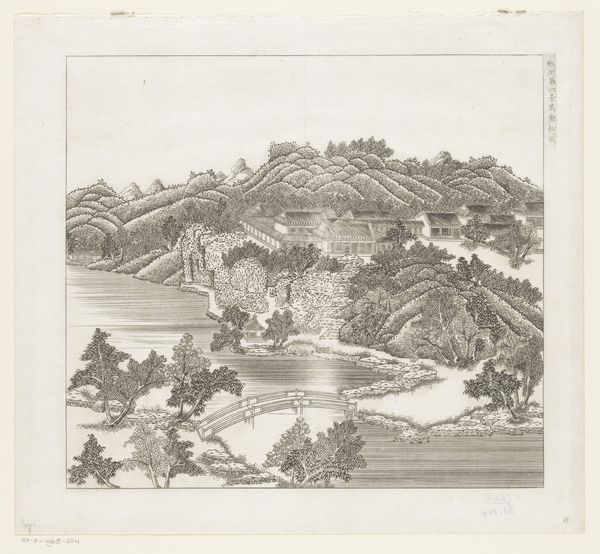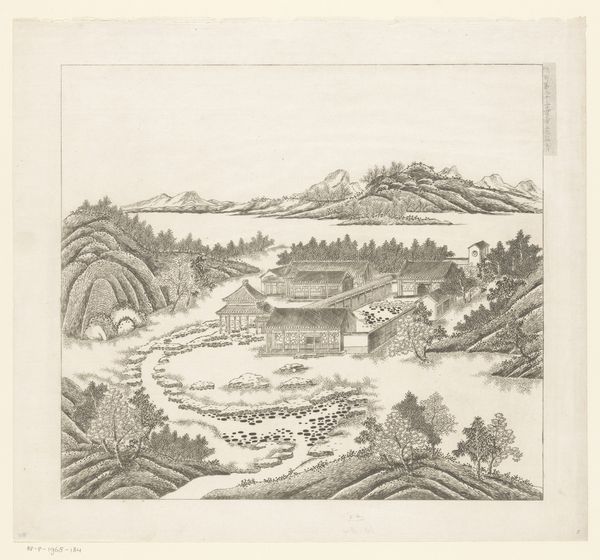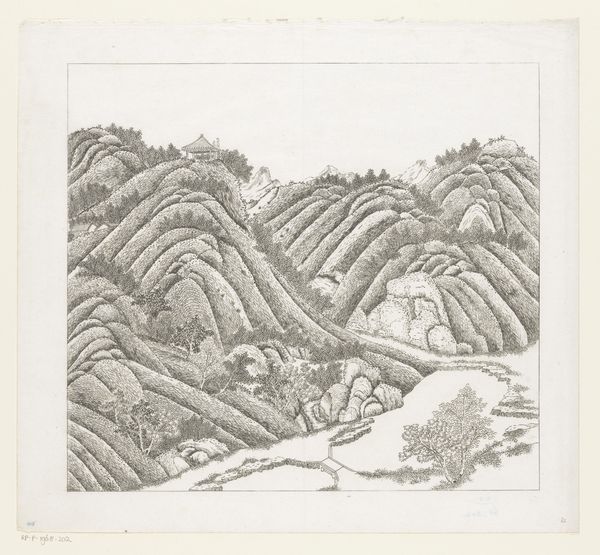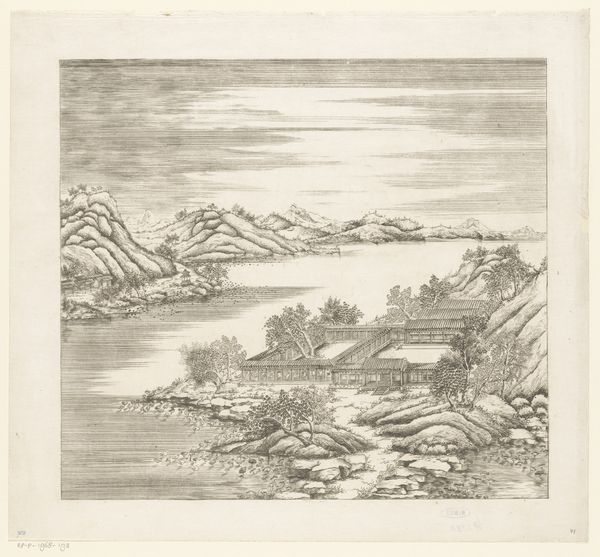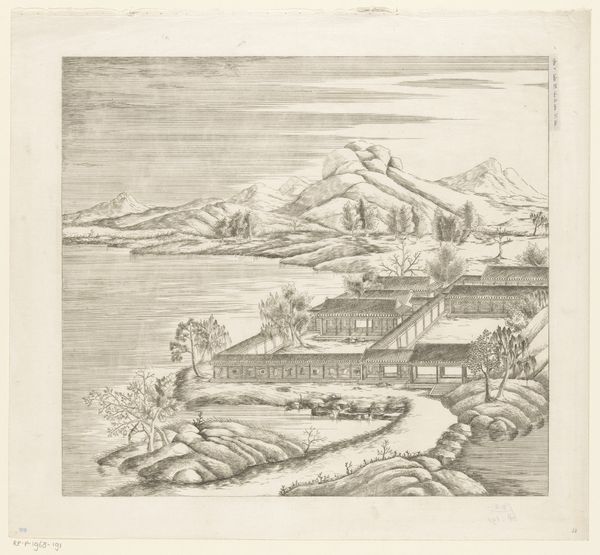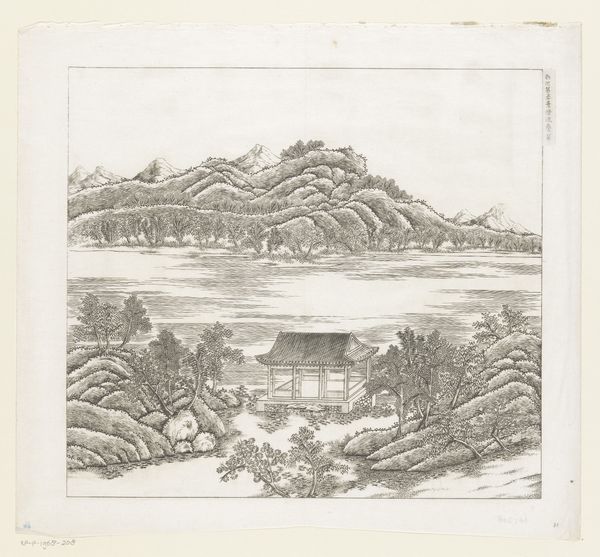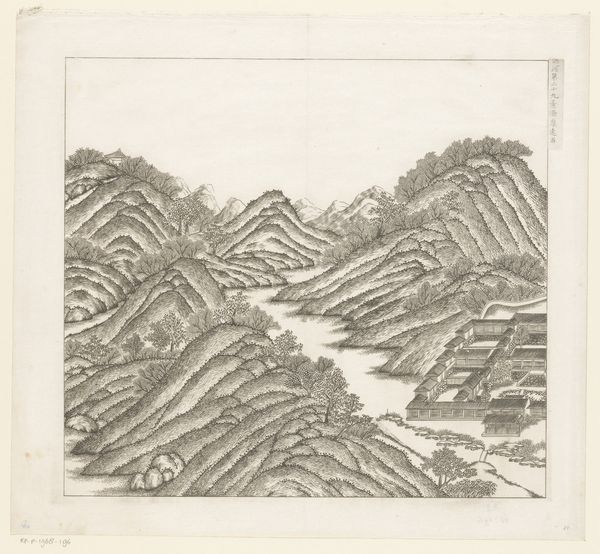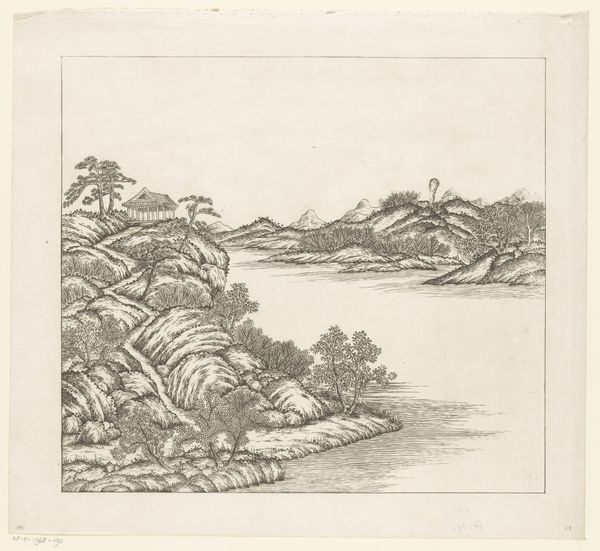
Gezicht op een deel van het keizerlijk zomerpaleis in Chengde (Jehol) te China 1712 - 1714
0:00
0:00
print, engraving, architecture
# print
#
asian-art
#
old engraving style
#
landscape
#
engraving
#
architecture
Dimensions: height 325 mm, width 356 mm
Copyright: Rijks Museum: Open Domain
Curator: This print, crafted between 1712 and 1714 by Matteo Ripa, offers "A View of a Part of the Imperial Summer Palace in Chengde (Jehol) in China," here at the Rijksmuseum. The piece is an engraving, demonstrating the transfer of European printmaking techniques to China. Editor: My first impression is a sense of serene isolation. The summer palace nestles into the landscape, seemingly at peace. The monochromatic palette lends an ethereal quality, and the engraving style a delicate formality. Curator: Indeed, Ripa’s journey is remarkable. He served as a painter and engraver at the Qing court under the Kangxi Emperor. The very act of creating these engravings signifies cultural exchange. It highlights the ways in which artisanal skills were valued and deployed. I wonder how his access impacted material choices. Editor: I see layers of symbolism at play. Notice the elevated pavilion atop the mountain – it suggests a connection to the heavens, the Emperor’s mandate, perhaps? The careful rendering of architecture nestled in nature resonates with Confucian ideals of harmony. And the water! Represents tranquility but also constant renewal, vital to life. Curator: I am interested in how printmaking shaped this specific artistic encounter. As an import of Western processes, it becomes enmeshed with Eastern aesthetics. How do you see those forces working? Consider labor division and specialized skill. Ripa would not have just walked in to this scene and freely observed it, but gained access based on his function at court. Editor: Looking at the winding paths, and their serpentine design, I’m struck by the invitation to reflect and contemplate, not just move through space. The architecture feels organic, grown from the hill itself. These choices were made specifically by someone attempting to reconcile foreign and local modes. The mountains become not only land but also status signifiers, visually emphasizing imperial power. Curator: And in doing so, this seemingly peaceful scene betrays something about systems of power inherent in material exchange itself, embedded into the piece’s creation. The act of reproduction made it widely available, a gesture of political meaning in itself. Editor: Absolutely. By viewing the work through an iconographic lens and attending to details we've noted here today, it underscores layers of influence, merging European perspective with Chinese ideals. The ripples of these historical relationships continue to resonate.
Comments
No comments
Be the first to comment and join the conversation on the ultimate creative platform.
